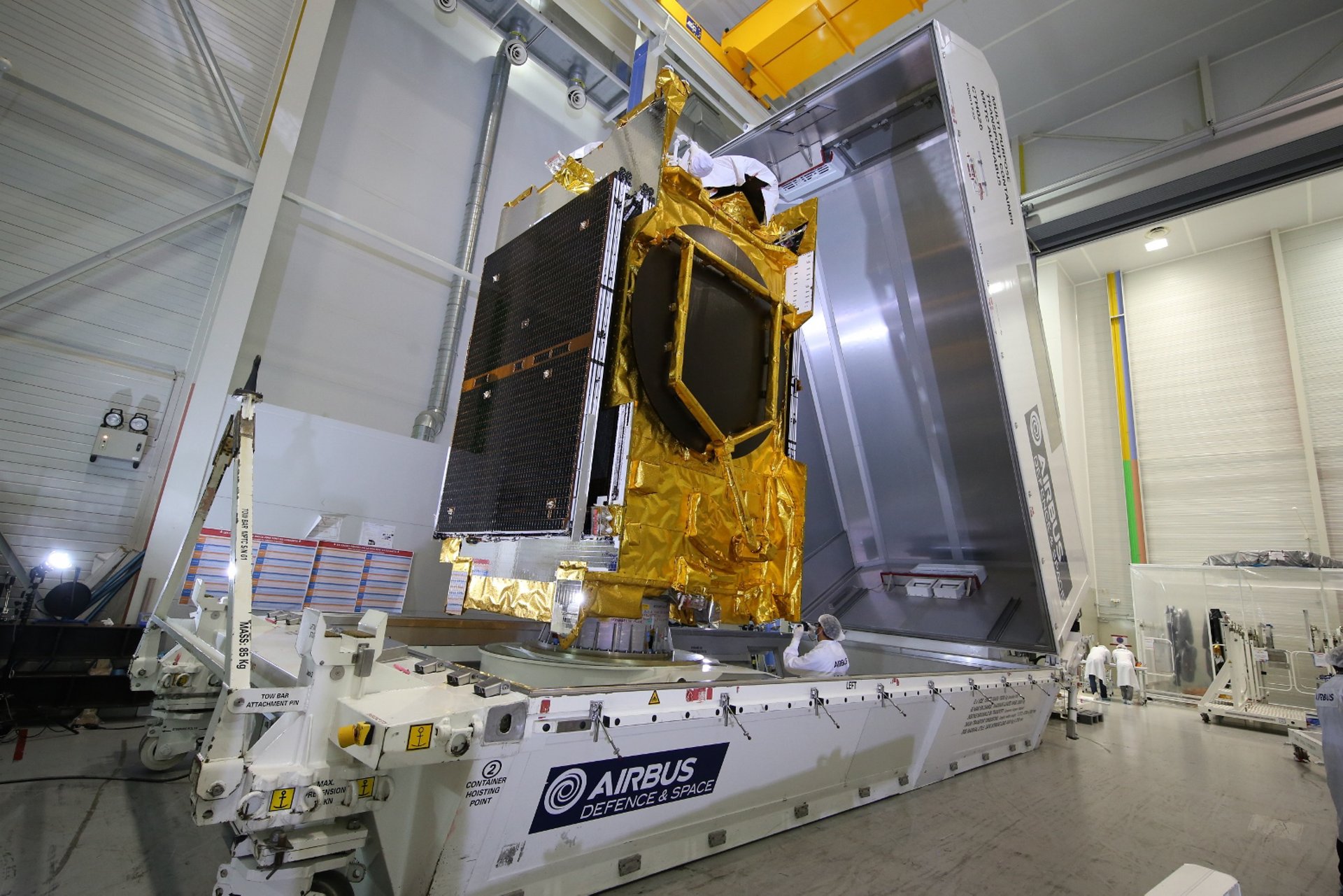Watch SpaceX launch a South Korean military satellite today
Update for 6 p.m. ET: SpaceX has successfully launched the South Korea's Anasis-II military communications satellite and landed its Falcon 9 booster at sea. Read our full story.
Original story:
A SpaceX Falcon 9 rocket will launch South Korea's first military satellite today (July 20) after a nearly weeklong delay for extra booster checks.
The Falcon 9 rocket is scheduled to launch the satellite, called Anasis-II, at 5 p.m. EDT (2100 GMT) today from SpaceX's Space Launch Complex 40 at Cape Canaveral Air Force Station in Florida.
You can watch the SpaceX launch live here and on the Space.com homepage, courtesy of SpaceX. You can also watch the launch directly from SpaceX's webcast page here and on YouTube here. The company is also expected to provide mission audio from its launch control center on its YouTube page.
Related: See the evolution of SpaceX's rockets in pictures
The mission has a nearly four-hour launch window that closes at 8:55 p.m. EDT (0055 July 21 GMT), but the weather looks good. There is a 70% chance of good launch weather today, according to the U.S. Space Force's 45th Weather Squadron.
Breaking space news, the latest updates on rocket launches, skywatching events and more!
SpaceX originally hoped to launch South Korea's Anasis-II satellite on July 14, but called the mission off a day before liftoff to perform extra checks on the Falcon 9's upper stage. The rocket's first stage has flown to space before: It launched SpaceX's first astronaut mission for NASA, Demo-2, on May 30.
"We're being extra paranoid. Maximizing [the] probability of successful launch is paramount," SpaceX CEO Elon Musk wrote on Twitter.
Those booster checks were complete by Saturday (July 18), when SpaceX announced that it was now targeting a launch for today.
SpaceX aims to recover the first stage of the Falcon 9 rocket after today's launch. The booster is expected to land on the company's drone ship "Just Read The Instructions" stationed offshore in the Atlantic Ocean.
That landing should occur eight minutes and 31 seconds after liftoff. After the landing, SpaceX will shut down its live coverage at the request of the South Korean government.
"Per the customer's request, live coverage will end shortly after first stage landing," the company said.
The Anasis-II satellite is designed to "provide secured communications over wide coverage," according to its builder Airbus Defence and Space.
It is based on Airbus' Eurostar E3000 satellite platform and will be launched into a geostationary orbit, which will allow it to maintain position over a specific part of Earth at an altitude of 22,000 miles (36,000 kilometers).
If all goes well, Anasis-II will be deployed in an initial orbit about 32 minutes after liftoff, SpaceX said.
Email Tariq Malik at tmalik@space.com or follow him @tariqjmalik. Follow us @Spacedotcom, Facebook and Instagram.

Tariq is the award-winning Editor-in-Chief of Space.com and joined the team in 2001. He covers human spaceflight, as well as skywatching and entertainment. He became Space.com's Editor-in-Chief in 2019. Before joining Space.com, Tariq was a staff reporter for The Los Angeles Times covering education and city beats in La Habra, Fullerton and Huntington Beach. He's a recipient of the 2022 Harry Kolcum Award for excellence in space reporting and the 2025 Space Pioneer Award from the National Space Society. He is an Eagle Scout and Space Camp alum with journalism degrees from the USC and NYU. You can find Tariq at Space.com and as the co-host to the This Week In Space podcast on the TWiT network. To see his latest project, you can follow Tariq on Twitter @tariqjmalik.

